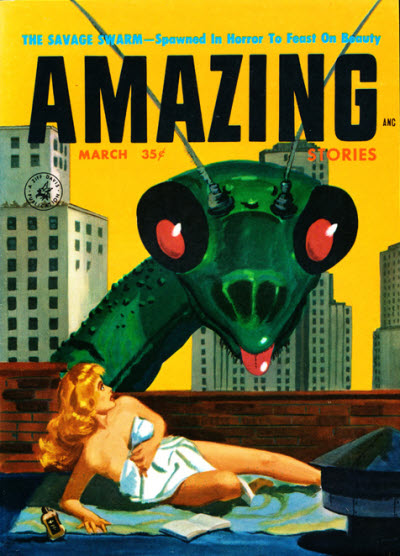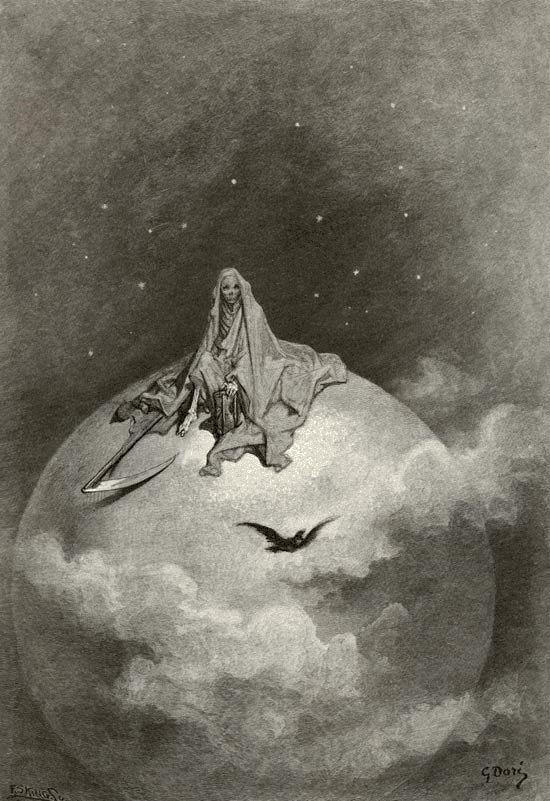|
Quiet, Please
''Quiet, Please!'' was a radio fantasy and horror program created by Wyllis Cooper, also known for creating ''Lights Out''. Ernest Chappell was the show's announcer and lead actor. ''Quiet, Please'' debuted June 8, 1947 on the Mutual Broadcasting System, and its last episode was broadcast June 25, 1949, on the ABC. A total of 106 shows were broadcast, with only a very few of them repeats. Earning relatively little notice during its initial run, ''Quiet, Please'' has since been praised as one of the finest efforts of the golden age of American radio drama. Professor Richard J. Hand of the University of Glamorgan, in a detailed critical analysis of the series, argued that Cooper and Chappell "created works of astonishing originality";Richard J. Hand. Terror on the Air!: Horror Radio in America, 1931–1952. McFarland, 2006. ; passim; especially Chapter 9 "The Unsettling Universe of Wyllis Cooper and Ernest Chappell: Quiet, Please (1947–1949)", pp. 145–166. he further desc ... [...More Info...] [...Related Items...] OR: [Wikipedia] [Google] [Baidu] |
Harlan Ellison
Harlan Jay Ellison (May 27, 1934 – June 28, 2018) was an American writer, known for his prolific and influential work in New Wave speculative fiction and for his outspoken, combative personality. Robert Bloch, the author of ''Psycho'', described Ellison as "the only living organism I know whose natural habitat is hot water." His published works include more than 1,700 short stories, novellas, screenplays, comic book scripts, teleplays, essays, and a wide range of criticism covering literature, film, television, and print media. Some of his best-known works include the 1967 ''Star Trek'' episode " The City on the Edge of Forever" (he subsequently wrote a book about the experience that includes his original screenplay), his '' A Boy and His Dog'' cycle, and his short stories " I Have No Mouth, and I Must Scream" and " 'Repent, Harlequin!' Said the Ticktockman". He was also editor and anthologist for ''Dangerous Visions'' (1967) and '' Again, Dangerous Visions'' (1972). E ... [...More Info...] [...Related Items...] OR: [Wikipedia] [Google] [Baidu] |
Dream
A dream is a succession of images, ideas, emotions, and sensations that usually occur involuntarily in the mind during certain stages of sleep. Humans spend about two hours dreaming per night, and each dream lasts around 5 to 20 minutes, although the dreamer may perceive the dream as being much longer than this. The content and function of dreams have been topics of scientific, philosophical and religious interest throughout recorded history. Dream interpretation, practiced by the Babylonians in the third millennium BCE and even earlier by the ancient Sumerians, figures prominently in religious texts in several traditions, and has played a lead role in psychotherapy. The scientific study of dreams is called oneirology. Most modern dream study focuses on the neurophysiology of dreams and on proposing and testing hypotheses regarding dream function. It is not known where in the brain dreams originate, if there is a single origin for dreams or if multiple regions of the bra ... [...More Info...] [...Related Items...] OR: [Wikipedia] [Google] [Baidu] |
Humor
Humour (Commonwealth English) or humor (American English) is the tendency of experiences to provoke laughter and provide amusement. The term derives from the humoral medicine of the ancient Greeks, which taught that the balance of fluids in the human body, known as humours (Latin: ', "body fluid"), controlled human health and emotion. People of all ages and cultures respond to humour. Most people are able to experience humour—be amused, smile or laugh at something funny (such as a pun or joke)—and thus are considered to have a ''sense of humour''. The hypothetical person lacking a sense of humour would likely find the behaviour to be inexplicable, strange, or even irrational. Though ultimately decided by personal taste, the extent to which a person finds something humorous depends on a host of variables, including geographical location, culture, maturity, level of education, intelligence and context. For example, young children may favour slapstick such as Punch and J ... [...More Info...] [...Related Items...] OR: [Wikipedia] [Google] [Baidu] |
Crime Fiction
Crime fiction, detective story, murder mystery, mystery novel, and police novel are terms used to describe narratives that centre on criminal acts and especially on the investigation, either by an amateur or a professional detective, of a crime, often a murder. It is usually distinguished from mainstream fiction and other genres such as historical fiction or science fiction, but the boundaries are indistinct. Crime fiction has multiple subgenres, including detective fiction (such as the whodunit), courtroom drama, hard-boiled fiction, and legal thrillers. Most crime drama focuses on crime investigation and does not feature the courtroom. Suspense and mystery are key elements that are nearly ubiquitous to the genre. History The ''One Thousand and One Nights'' (''Arabian Nights'') contains the earliest known examples of crime fiction. One example of a story of this genre is the medieval Arabic tale of " The Three Apples", one of the tales narrated by Scheherazade in th ... [...More Info...] [...Related Items...] OR: [Wikipedia] [Google] [Baidu] |
Science Fiction
Science fiction (sometimes shortened to Sci-Fi or SF) is a genre of speculative fiction which typically deals with imagination, imaginative and futuristic concepts such as advanced science and technology, space exploration, time travel, Parallel universes in fiction, parallel universes, extraterrestrials in fiction, extraterrestrial life, sentient artificial intelligence, cybernetics, certain forms of immortality (like mind uploading), and the technological singularity, singularity. Science fiction List of existing technologies predicted in science fiction, predicted several existing inventions, such as the atomic bomb, robots, and borazon, whose names entirely match their fictional predecessors. In addition, science fiction might serve as an outlet to facilitate future scientific and technological innovations. Science fiction can trace its roots to ancient mythology. It is also related to fantasy, Horror fiction, horror, and superhero fiction and contains many #Subgenres, sub ... [...More Info...] [...Related Items...] OR: [Wikipedia] [Google] [Baidu] |
Horror Fiction
Horror is a genre of fiction which is intended to frighten, scare, or disgust. Horror is often divided into the sub-genres of psychological horror and supernatural horror, which is in the realm of speculative fiction. Literary historian J. A. Cuddon, in 1984, defined the horror story as "a piece of fiction in prose of variable length... which shocks, or even frightens the reader, or perhaps induces a feeling of repulsion or loathing". Horror intends to create an eerie and frightening atmosphere for the reader. Often the central menace of a work of horror fiction can be interpreted as a metaphor for larger fears of a society. Prevalent elements of the genre include ghosts, demons, vampires, werewolves, ghouls, the Devil, witches, monsters, extraterrestrials, dystopian and post-apocalyptic worlds, serial killers, cannibalism, cults, dark magic, satanism, the macabre, gore and torture. History Before 1000 The horror genre has ancient origins, with roots in folk ... [...More Info...] [...Related Items...] OR: [Wikipedia] [Google] [Baidu] |
Symphony In D Minor (Franck)
The Symphony in D minor is the best-known orchestral work and the only mature symphony written by the 19th-century composer César Franck. It employs a cyclic form, with important themes recurring in all three movements. After two years of work, Franck completed the symphony on August 22, 1888. It was premiered at the Paris Conservatory on 17 February 1889 under the direction of Jules Garcin. Franck dedicated it to his pupil Henri Duparc. Despite mixed reviews at the time, it has subsequently entered the international orchestral repertoire. Although today programmed less frequently in concerts than in the first half of the 20th century, it has been recorded numerous times (more than 70 recordings are available). Background Franck, born in 1822 in what is now Belgium, became a naturalised French citizen in 1871.Trevitt, John, and Joël-Marie Fauquet"Franck, César(-Auguste-Jean-Guillaume-Hubert), ''Grove Music Online'', Oxford University Press, 2001. Retrieved 30 June 2021 That ... [...More Info...] [...Related Items...] OR: [Wikipedia] [Google] [Baidu] |
César Franck
César-Auguste Jean-Guillaume Hubert Franck (; 10 December 1822 – 8 November 1890) was a French Romantic composer, pianist, organist, and music teacher born in modern-day Belgium. He was born in Liège (which at the time of his birth was part of the United Kingdom of the Netherlands). He gave his first concerts there in 1834 and studied privately in Paris from 1835, where his teachers included Anton Reicha. After a brief return to Belgium, and a disastrous reception of an early oratorio ''Ruth'', he moved to Paris, where he married and embarked on a career as teacher and organist. He gained a reputation as a formidable musical improviser, and travelled widely within France to demonstrate new instruments built by Aristide Cavaillé-Coll. In 1858, he became organist at the Basilica of St. Clotilde, Paris, a position he retained for the rest of his life. He became professor at the Paris Conservatoire in 1872; he took French nationality, a requirement of the appointment. Af ... [...More Info...] [...Related Items...] OR: [Wikipedia] [Google] [Baidu] |
Novachord
The Novachord is an electronic musical instrument often considered the world's first commercial polyphonic synthesizer. All-electronic, incorporating many circuit and control elements found in modern synthesizers, and using subtractive synthesis to generate tones, it was designed by John M. Hanert, Laurens Hammond and C. N. Williams, and was manufactured by the Hammond company. Only 1,069 Novachords were built over a period from 1939 to 1942. It was one of very few electronic products released by Hammond that was not intended to emulate the sound of an organ. History of production While production of the Novachord began in November 1938, it was first heard at the 1939 New York World's Fair. The Novachord Orchestra of Ferde Grofé performed daily at the Ford stand with four Novachords and a Hammond Organ. The first instrument was delivered to President Franklin D. Roosevelt on January 30, 1940 as a birthday present. The Novachord was not well-suited to the technique of organist ... [...More Info...] [...Related Items...] OR: [Wikipedia] [Google] [Baidu] |
Organ (music)
Carol Williams performing at the West_Point_Cadet_Chapel.html" ;"title="United States Military Academy West Point Cadet Chapel">United States Military Academy West Point Cadet Chapel. In music, the organ is a keyboard instrument of one or more Pipe organ, pipe divisions or other means for producing tones, each played from its own Manual (music), manual, with the hands, or pedalboard, with the feet. Overview Overview includes: * Pipe organs, which use air moving through pipes to produce sounds. Since the 16th century, pipe organs have used various materials for pipes, which can vary widely in timbre and volume. Increasingly hybrid organs are appearing in which pipes are augmented with electric additions. Great economies of space and cost are possible especially when the lowest (and largest) of the pipes can be replaced; * Non-piped organs, which include: ** pump organs, also known as reed organs or harmoniums, which like the accordion and mouth organs (both Eastern and ... [...More Info...] [...Related Items...] OR: [Wikipedia] [Google] [Baidu] |
Dirge
A dirge ( la, dirige, naenia) is a somber song or lament expressing mourning or grief, such as would be appropriate for performance at a funeral. Often taking the form of a brief hymn, dirges are typically shorter and less meditative than elegies. Dirges are often slow and bear the character of funeral marches. Poetic dirges may be dedicated to a specific individual or otherwise thematically refer to death. The English word ''dirge'' is derived from the Latin ''Dirige, Domine, Deus meus, in conspectu tuo viam meam'' ("Direct my way in your sight, O Lord my God"), the first words of the first antiphon (a short chant in Christian liturgy) in the Matins (a canonical hour before sunrise) of the Office for the Dead (a prayer cycle), based on (5:9 in the Vulgate). The original meaning of ''dirge'' in English referred to this office, particularly as it appeared within breviaries and primer prayer books. History In the late Medieval period, it was common for Western Chr ... [...More Info...] [...Related Items...] OR: [Wikipedia] [Google] [Baidu] |






